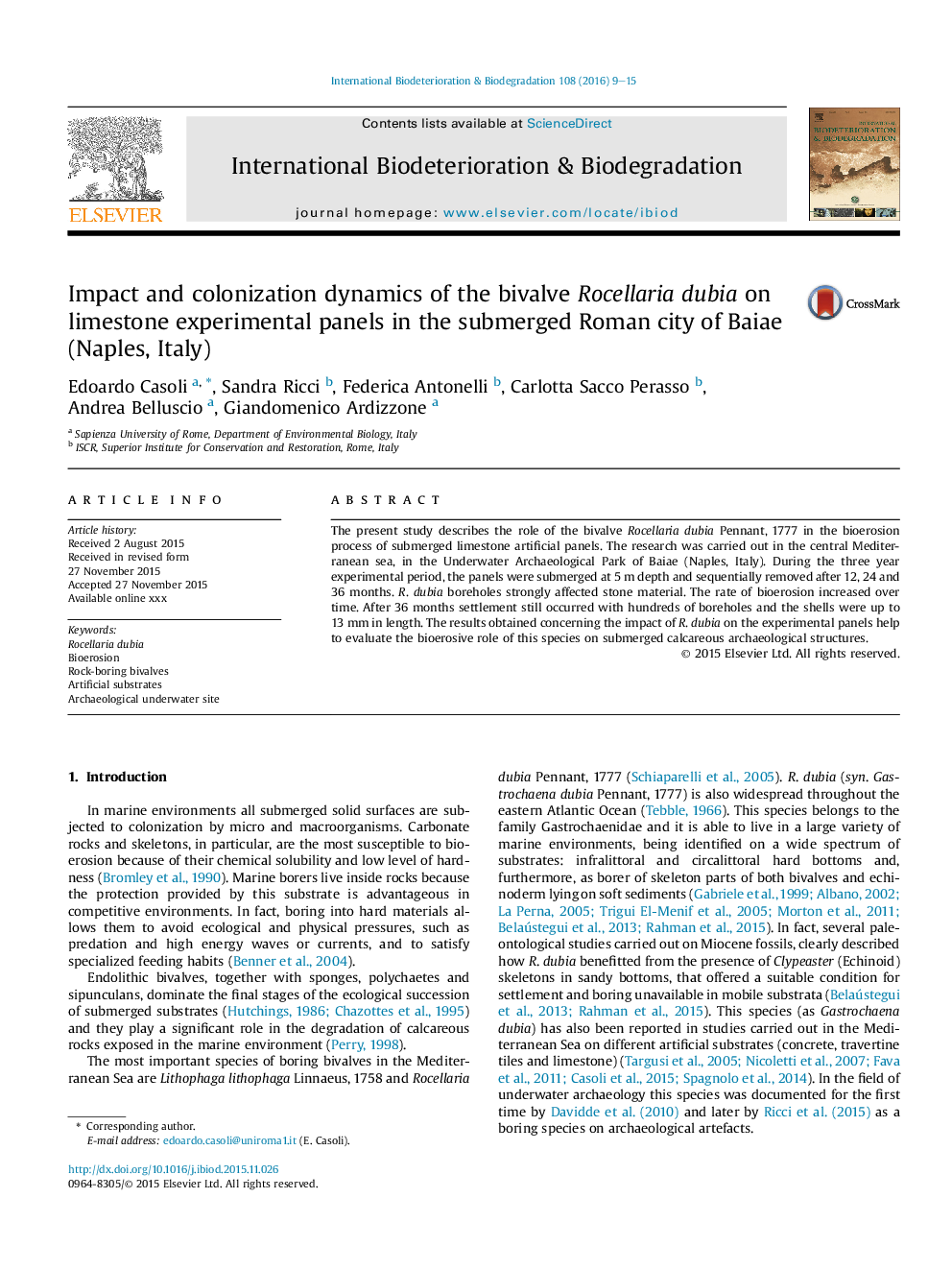| Article ID | Journal | Published Year | Pages | File Type |
|---|---|---|---|---|
| 6289170 | International Biodeterioration & Biodegradation | 2016 | 7 Pages |
Abstract
The present study describes the role of the bivalve Rocellaria dubia Pennant, 1777 in the bioerosion process of submerged limestone artificial panels. The research was carried out in the central Mediterranean sea, in the Underwater Archaeological Park of Baiae (Naples, Italy). During the three year experimental period, the panels were submerged at 5Â m depth and sequentially removed after 12, 24 and 36 months. R. dubia boreholes strongly affected stone material. The rate of bioerosion increased over time. After 36 months settlement still occurred with hundreds of boreholes and the shells were up to 13Â mm in length. The results obtained concerning the impact of R. dubia on the experimental panels help to evaluate the bioerosive role of this species on submerged calcareous archaeological structures.
Keywords
Related Topics
Life Sciences
Environmental Science
Environmental Science (General)
Authors
Edoardo Casoli, Sandra Ricci, Federica Antonelli, Carlotta Sacco Perasso, Andrea Belluscio, Giandomenico Ardizzone,
